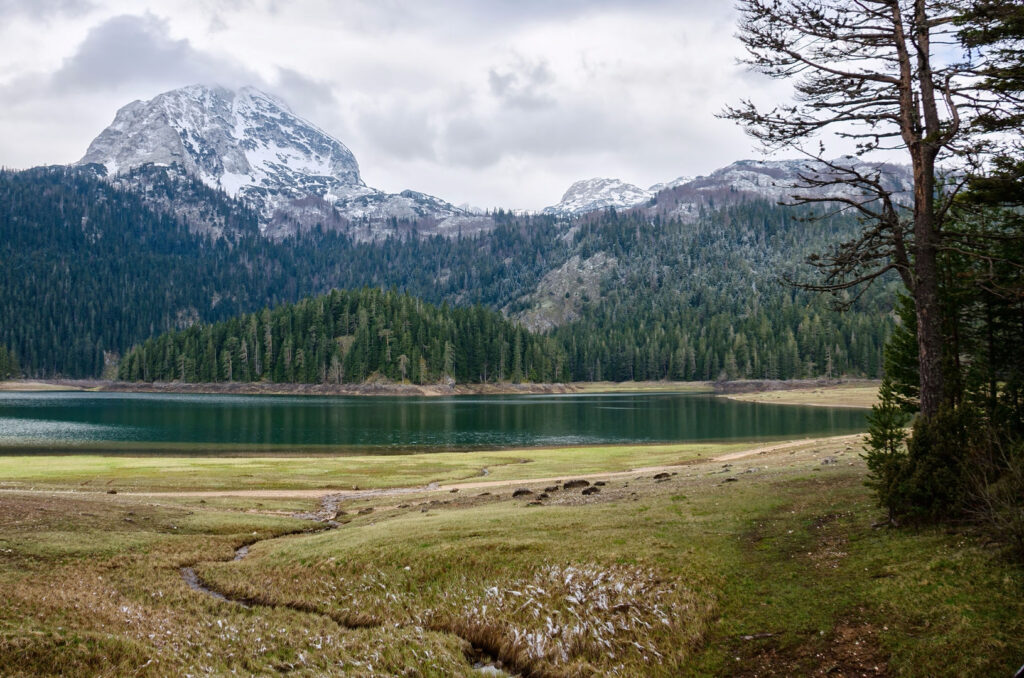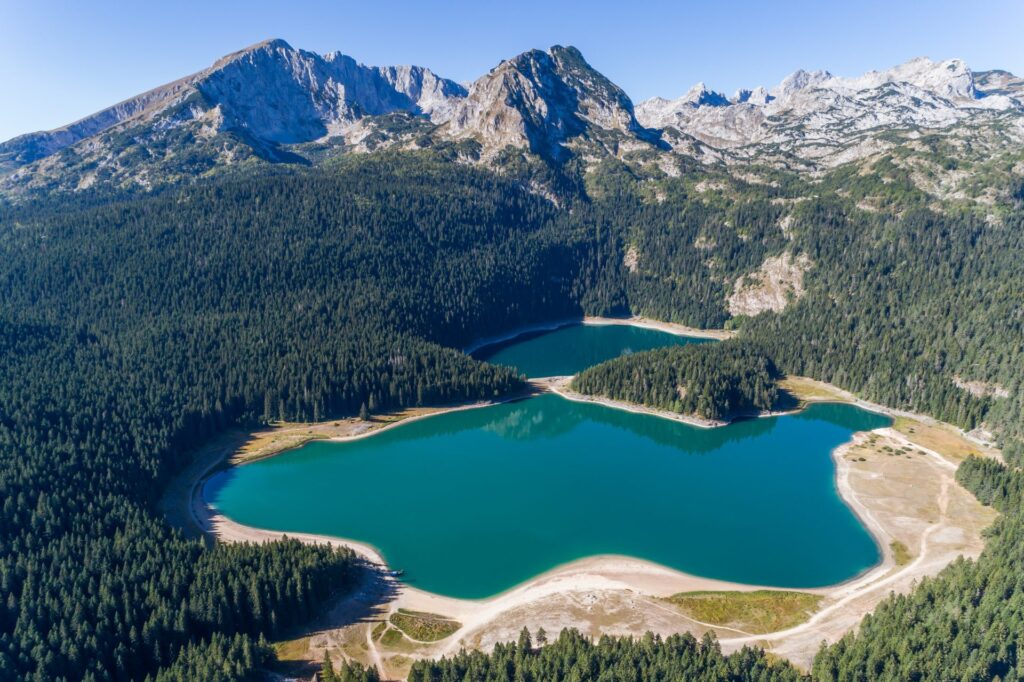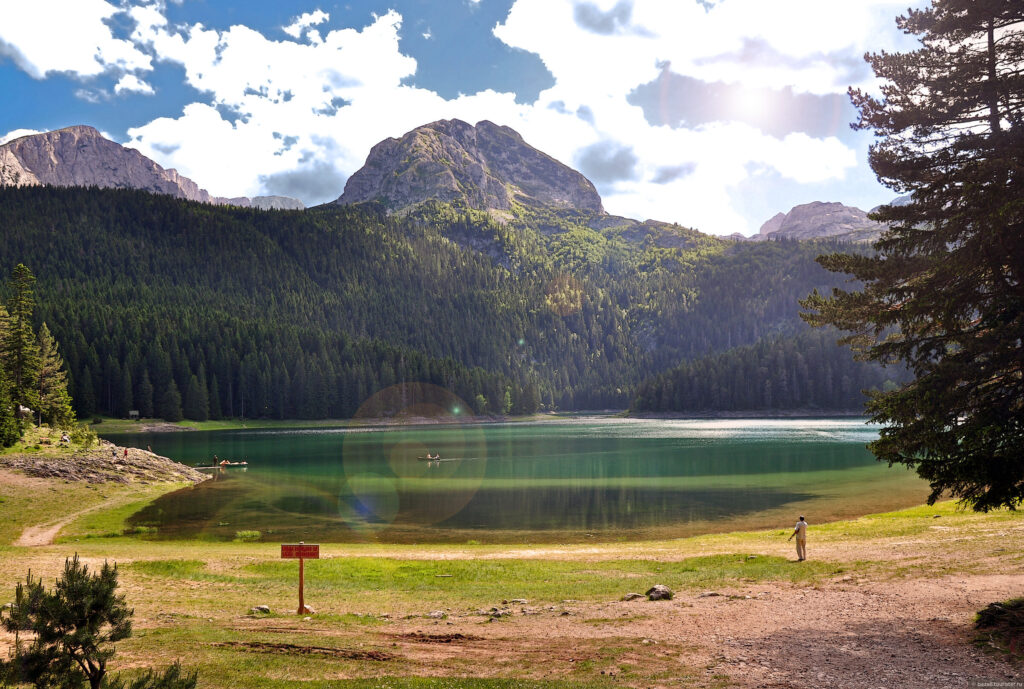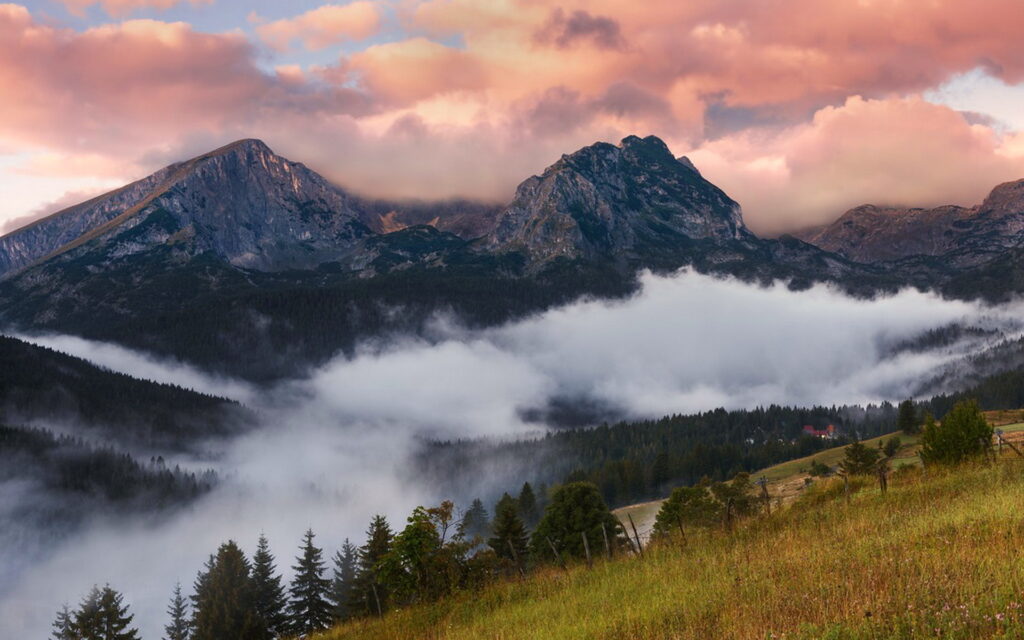geography of Durmitor park
Durmitor Park, nestled in the northwestern part of Montenegro, boasts a dazzling variety of geographical features that captivate the souls of travelers and nature enthusiasts alike. This UNESCO World Heritage site encompasses a rich tapestry of landscapes – from soaring peaks to profound canyons.
The park’s most prominent feature is the Durmitor Massif, a stunning mountain range with 48 peaks exceeding 2,000 meters. Among these, Bobotov Kuk stands tall, reaching an impressive 2,525 meters and offering breathtaking panoramas. These mountains were sculpted during the ice ages, resulting in dramatic rock formations, jagged ridges, and picturesque plateaus.
But geography of Durmitor park marvels don’t end with its peaks. Descending from the heights, one encounters the Tara River Canyon, the second-deepest in the world after the Grand Canyon. Carved over millions of years, this natural masterpiece snakes its way through the park, adorned with ancient forests and punctuated by serene lakes. The park boasts 18 glacial lakes, with the Black Lake being the most renowned, often described as Montenegro’s eyes due to its captivating beauty.
In conclusion, geography of Durmitor park presents a harmonious blend of high-altitude wonders and low-lying treasures. It’s a testament to the planet’s geological and geomorphological processes, offering a journey from towering mountains to deep canyons, all within its boundaries. Whether you’re an avid hiker, geology buff, or simply a lover of nature, the geographical contours of Durmitor will not cease to amaze.

ecological diversity of Durmitor park
Durmitor Park stands as a beacon of ecological richness in the heart of Europe, offering a kaleidoscope of habitats that shelter a plethora of species. Its vast landscapes, ranging from towering peaks to deep canyons, create a haven for biodiversity.
Foremost among Durmitor’s natural treasures are its dense forests, primarily consisting of European black pine and Norway spruce. These ancient woodlands, some of which have stood for over 400 years, play host to various wildlife species. Here, one might catch a glimpse of the elusive lynx or hear the call of the golden eagle soaring overhead.
But it’s not just the forests that make ecological diversity of Durmitor park an ecological gem. Its high-altitude meadows, adorned with an array of wildflowers, are home to unique insect species, some of which can be found nowhere else on Earth. Moreover, the park’s pristine lakes and rivers teem with life, from endemic fish species to playful otters.
Durmitor’s commitment to conservation ensures that these habitats remain undisturbed. The park’s status as a UNESCO World Heritage site further underscores its global ecological significance.
In essence, ecological diversity of Durmitor park is more than just scenic landscapes; it’s a living testament to the wonders of nature, where every rock, tree, and stream tells a story of ecological balance and coexistence. Whether you’re a nature enthusiast or a casual traveler, the diverse habitats and species of Durmitor will leave an indelible mark on your soul.

history of Durmitor Park
Nestled in the rugged landscapes of Montenegro, Durmitor Park is more than a pristine wilderness; it’s a living tapestry of history and culture. From ancient times, this land has borne witness to the ebb and flow of civilizations, each leaving its indelible mark.
The roots of Durmitor Park trace back to prehistoric times, with archaeological findings suggesting early human settlements. These ancient inhabitants revered the land, viewing the majestic peaks and serene lakes as sacred. Over time, various tribes and cultures settled here, from the Illyrians to the Slavs, each contributing to the rich cultural mosaic of the region.
By the Middle Ages, the Durmitor region became a vital crossroad for traders and travelers. Its strategic location, coupled with its natural resources, made it an attractive hub for various kingdoms. Throughout these turbulent times, the region’s inhabitants developed unique traditions, folklore, and art, much of which is still celebrated today.
The establishment of Durmitor Park in the 20th century sought to preserve not just its natural wonders but also its cultural heritage. The park has since become a focal point for researchers, historians, and cultural enthusiasts eager to delve into its storied past.
Today, history of Durmitor Park stands as a testament to the resilience and spirit of its people. Festivals, rituals, and traditional crafts passed down through generations still flourish within its boundaries. Visitors are not only captivated by the park’s natural beauty but also by the stories, myths, and legends that echo through its valleys and mountaintops.
In essence, history of Durmitor Park is a harmonious blend of nature and culture, where history intertwines with the present, reminding us of the enduring bond between humans and the land they inhabit.

tourism activities in Durmitor Park
Durmitor Park, with its awe-inspiring landscapes, has emerged as one of Europe’s premier destinations for nature enthusiasts and adventure seekers. Nestled in Montenegro’s highlands, this park promises diverse experiences, ranging from tranquil nature walks to adrenaline-pumping activities.
One of the main draws of Durmitor is its extensive network of trails. Whether you’re a novice hiker seeking gentle routes or an experienced trekker looking for challenging climbs, Durmitor Park caters to all. Trails like the Circuit around the Black Lake offer panoramic views, while paths leading up to peaks such as Bobotov Kuk present rigorous tests of endurance.
For those with a penchant for adventure, Durmitor doesn’t disappoint. Rafting along the Tara River, which carves its way through one of the world’s deepest canyons, is a must-try. Winter transforms tourism activities in Durmitor Park into a snowy paradise, making it a hotspot for skiing and snowboarding.
However, with the influx of tourists, there’s an ever-pressing need to maintain the balance between recreation and conservation. Durmitor’s management has put forth guidelines to ensure the park’s natural wonders remain undisturbed. Visitors are encouraged to adhere to marked trails, minimize waste, and respect the flora and fauna. Ecotourism initiatives within Durmitor Park also promote sustainable tourism practices, ensuring that the park’s pristine beauty is preserved for generations to come.
In conclusion, while tourism activities in Durmitor Park offers a plethora of activities for visitors, it’s the collective responsibility of tourists and local authorities alike to maintain its ecological balance. This harmonious coexistence ensures that Durmitor remains a beacon of natural wonder and sustainable tourism in the heart of Europe.

